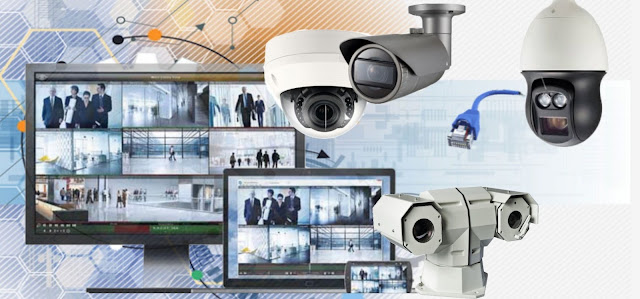E-Surveillance Monitoring: Transforming Banking Security and Compliance
Did you know that on average, $7,500 is stolen in each bank robbery in the United States?
Ever wonder how secure your bank is? With physical and cyber threats constantly evolving, it's a question worth asking. In today's digital age, the banking sector faces unprecedented challenges in safeguarding customer data and financial assets.
The banks have always been a favorite target of burglars and dacoits. Banks handle sensitive financial transactions and have used digitization and other sophisticated technology upfront. Cyber threats and financial crimes pose significant challenges to the security and integrity of banking operations. Traditional security measures are proving inadequate. In the face of these evolving risks, there is an urgent need for robust e-surveillance solutions.
Let’s discuss multifaceted benefits and pressing challenges associated with the implementation of e-surveillance solutions in fortifying the security and compliance posture of the banking sector.
E-Surveillance in the Banking Sector:
E-surveillance or electronic surveillance, refers to the sophisticated employment of electronic monitoring systems to capture, analyze, and respond to data in real-time. For banks, E-surveillance offers a wide array of technologies, including CCTV, intrusion detection systems (IDS), 2-way audio systems, sirens, access control mechanisms, biometrics, and advanced data analytics.
Mitigating Fraud and Financial Crimes:
Financial institutions represent prime targets for fraudulent activities and criminal endeavors due to large volume cash transactions. E-surveillance systems serve as vigilant guardians, facilitating continuous monitoring to detect and thwart armed burglar attacks and unauthorized access attempts promptly.
Strengthening Operational Efficiency:
By automating security protocols and processes, e-surveillance solutions streamline banking operations, enhancing efficiency and service delivery. These systems monitor cash handling procedures, ensure compliance with regulatory mandates, and track employee activities, reducing manual efforts and optimizing workflows.
Fostering Customer Safety and Trust:
The establishment of a secure banking environment is paramount in nurturing and maintaining customer trust. Bank surveillance systems act as deterrents to criminal activities, instilling confidence among customers in the safety of their financial transactions. When customers feel secure, they are more inclined to engage in banking activities and cultivate enduring relationships with financial institutions.
Benefits of E-Surveillance Solutions:
Real-time Monitoring and Alerts:
E-surveillance systems offer real-time monitoring of critical areas within banking premises, such as cash counters, automated teller machines (ATMs), and data centers. Any anomalies or security breaches trigger instantaneous alerts, enabling prompt responses and effective risk mitigation measures.
Enhanced Physical Security:
Through the deployment of CCTV cameras, access control mechanisms, and biometric technologies, e-surveillance solutions fortify physical security within banking facility perimeters. These systems deter unauthorized access attempts, monitor employee conduct, and provide valuable visual evidence for investigative purposes.
Advanced Analytics and Threat Detection:
Harnessing the power of data analytics, e-surveillance solutions identify patterns, anomalies, and emerging threats within vast datasets. By discerning trends and predicting risks, banks can proactively implement security measures to counter potential threats before they materialize.
Compliance and Audit Support:
Regulatory compliance is the most fundamental component of the banking sector, and e-surveillance systems play a pivotal role in upholding adherence to legal and regulatory frameworks. These systems meticulously monitor and record activities, providing comprehensive audit trails that facilitate regulatory compliance assessments and internal audits.
Challenges and Considerations:
Data Privacy and Protection:
While e-surveillance solutions offer unparalleled benefits, they concurrently raise concerns regarding data privacy and protection. Financial institutions must navigate stringent data protection regulations, implement robust encryption protocols, and enforce stringent access controls to safeguard the confidentiality and integrity of customer and employee data.
Integration and Scalability:
The successful implementation of bank security solutions necessitates seamless integration with existing banking infrastructure and networks. Financial institutions must address compatibility challenges, scalability requirements, and the imperative of facilitating seamless data exchange across disparate platforms to ensure the efficacy of e-surveillance measures.
Human Factor:
Despite the sophistication of e-surveillance technologies, the human element remains pivotal in ensuring their effectiveness. Adequate training and awareness initiatives are imperative to educate banking personnel about surveillance protocols, ethical guidelines, and the criticality of data security. Moreover, employees must be equipped with the requisite knowledge and skills to promptly identify and respond to security threats judiciously.
Conclusion:
In an era characterized by escalating cyber threats and increasingly sophisticated financial crimes, e-surveillance solutions stand as indispensable pillars in fortifying the security and compliance posture of the banking sector. These systems not only serve as formidable deterrents to fraud and illicit activities but also augment operational efficiency and cultivate customer trust. Nonetheless, financial institutions must confront and surmount challenges such as data privacy concerns, integration complexities, and human factors to harness the full potential of e-surveillance solutions. By embracing and implementing robust e-surveillance measures, banks can proactively safeguard their interests, enhance security, and contribute to the establishment of a safer and more trustworthy banking environment.


Comments
Post a Comment